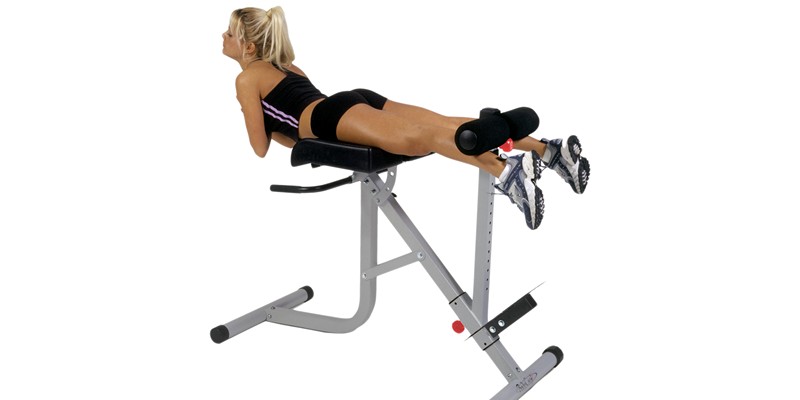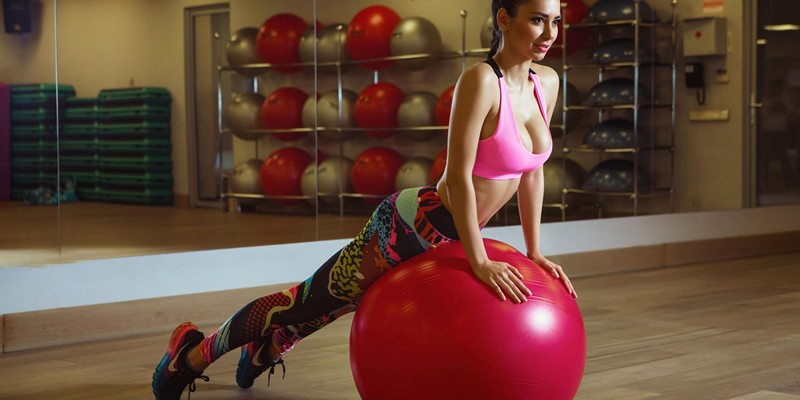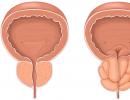Back hyperextension
Simple at first glance, but quite complex in technique, the exercise is hyperextension for the back. It targets the lower back, glutes and hamstrings. First of all, this is a basic back exercise, but you can approach it from different angles. In this case, you can pay more attention to pumping the buttocks, or hips. But, in fact, few people know how to perform correctly on the development of the lower body.
The spine is a very important part of the skeleton that is responsible for many functions. It protects the spinal cord from damage and is the main pillar of the entire body. Thanks to the spine, a person can do most of the movements, so the back muscles should always be healthy and developed. If there is a problem in the development of the spinal muscles, then the functions of the spine can no longer be fully performed, or not performed at all. Hyperextension helps to develop the back muscles for the full functioning of the human musculoskeletal system.
Exercise comes in many different forms and ways of doing it. Therefore, before taking on it, you need to decide on the result that you expect from the exercise. Since it is not exclusively strong, in addition to pumping certain muscle groups, it also performs a number of related functions:
- Supports different muscle groups in good shape;
- Aligns posture;
- Normalizes blood circulation;
- Strengthens bones, joints, tendons, and most importantly, the spinal column;
- Promotes the saturation of the body with oxygen;
- Accelerates the body's metabolism.

Who should do hyperextension?
Since the effect can be different, depending on the desired result, it can be performed by different groups of people. The main thing is correct execution. Hyperextension should be performed:
- Novice athletes. The most relevant task is for beginners in sports. Severe exercise can harm the spine, since it is not yet surrounded by strong muscles, and the load is always great. Strengthening the spine is a must before doing serious strength sports. With this performance, the main target is the extensor muscles. The whole effect must be focused on them;
- Athletes. Back hyperextension is recommended as a warm-up. Thanks to the above-mentioned accompanying functions, the exercise will warm up the body before serious exertion, bring the muscles into vigor (tones up), reduce the risk of injury, especially the back;
- People with back problems. Hyperextension is not only a preventive exercise, but also a curative one. For people with back pathologies, this is simply necessary. But you can take up the exercise only after consulting your doctor after a full examination, in order to avoid complications from execution. Osteochondrosis, scoliosis, hernia, protrusion and other diseases, hyperextension will help to cure. Systematic performance of the exercise will make it possible not only to make the back healthy, but also stronger, stronger;
- People who lead an inactive lifestyle. Nowadays, more and more people lead an inactive and sedentary lifestyle. It also makes it possible to progress to various diseases. Office people are plagued by slouching, fatigue and back pain. Due to immobility, the muscles atrophy. Regular exercise will save the body from diseases and will give you excellent posture.
You can do it in several ways. Each is designed to produce some kind of result that is different from other forms. It's about technique and the group of muscles involved. Forms are also different for professional athletes, beginners. Hyperextension to heal the spine is not very different from strength training to build specific muscles.
Types of hyperextension

The legs are fixed parallel to the floor. A versatile way to perform both in the gym and at home. Amplitude less than normal performance. Good for handling extra weight.
Oblique hyperextension. Exercise type for the simulator. The angle is adjustable depending on the load calculations. The legs are fixed to the platform. The amplitude depends on the distance of the legs to the platform. Stretching the sacral back and hips works well. This type is performed in two versions:
- Arched back. The back bends back for more tension on the muscles. Emphasis on pumping.
- Round back. The arms are crossed over the chest. The exercise is performed with a bent back to form a circle. Stretches the spine, stretches the lower back. Does not allow the spine to be compressed.
Reverse hyperextension. The body is fixed, swings are made with the legs. Exercise affects the back less than the hips, buttocks and abs. Additional exercise for general development.
Lateral hyperextension. It is best to remove the sides in this way. The back is resting, the oblique muscles of the press and intercostal muscles are working. Legs are constantly tense during training.
Since the body is not fixed, due to the softness of the fitball, it is necessary to adjust the centering. In this case, stabilizing muscles are especially developed.
- Be sure to read:
Weightlifters often train with this hyperextension because it has a good effect on coordination.

- Find out:
Back hyperextension is a must for every athlete. The spine must be firmly fixed by the muscles at all times, and it is hyperextension that best strengthens the long back muscles. For therapeutic use, there is a need to consult a doctor, as there may be negative effects from exercise. Hyperextension is an additional exercise for general development, but it pumps well from the back, gluteal muscles and hamstrings.
| Your feedback on the article |






